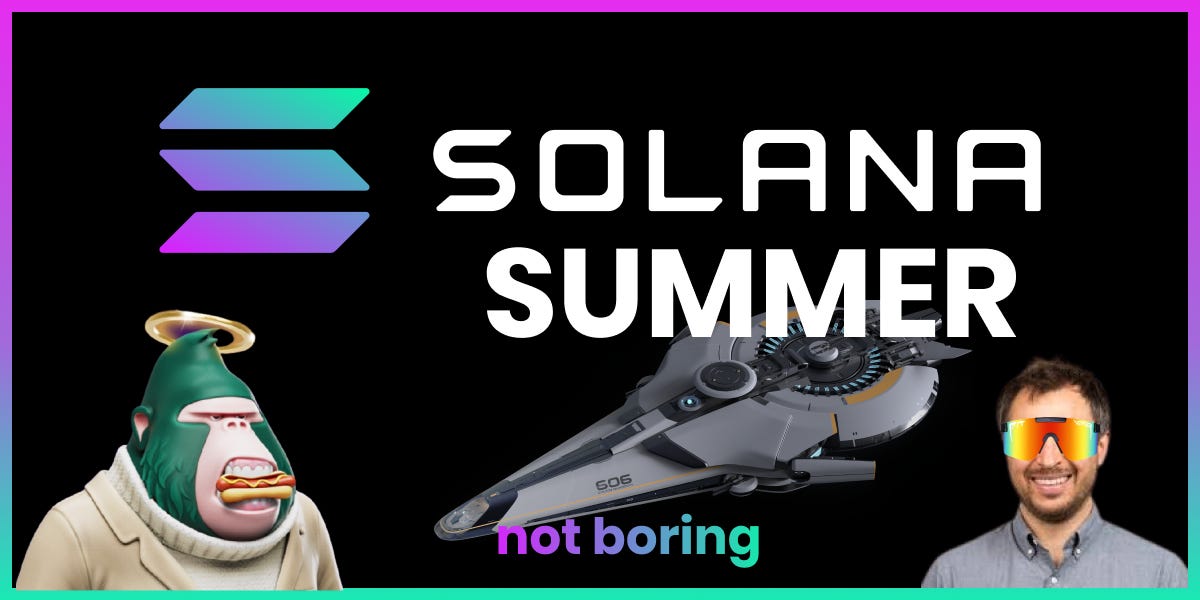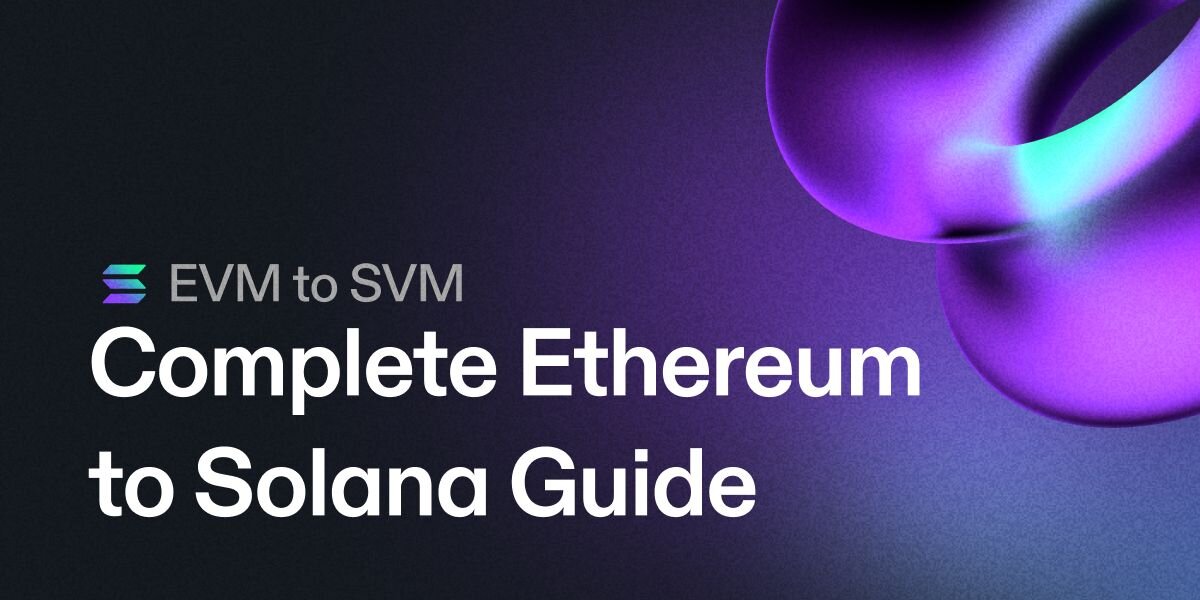As the blockchain and cryptocurrency sectors continue to evolve, the rivalry and advancements within these ecosystems bring forward new perspectives and opportunities. Solana, with its recent developments, stands out as a notable player.
Solana's approach showcases several key differences compared to Ethereum:
- Parallel Transaction Processing: Unlike Ethereum's single-threaded EVM (Ethereum Virtual Machine), Solana processes transactions in parallel. This architectural choice allows for more efficient handling of multiple transactions simultaneously, significantly boosting throughput. (VISA)
- Localized Fee Markets: Solana operates with local fee markets, which means that spikes in gas prices in one part of the network do not adversely affect unrelated users. This system contrasts with Ethereum's global fee market, where increased demand in one area can lead to higher fees network-wide.
- Decoupled Logic and State: In Solana, logic and state are separate entities. This separation offers greater flexibility and room for composability in smart contract development, allowing developers to create more complex and interconnected applications.
In practice, these technical distinctions have tangible benefits. Solana has achieved a remarkable throughput, surpassing 2,000 user transactions per second (TPS). This rate exceeds the combined TPS of all Ethereum Layer 2 solutions and Ethereum itself by a significant margin. Moreover, it achieves this high performance while maintaining an average transaction fee of only $0.00025 and supporting over 3,000 nodes. For context, Solana operates in more data centers than most other blockchains have nodes in total.
Solana is working on an experimental project to give app builders the ability to set dynamic and customized fees for interacting with an app's state. This update will enable app-specific customized fee models, app level value capture and spam prevention and improved UX. One reason apps want their own appchain is to customize their fee market.

While some express concerns over Solana nodes needing significant resources, such as 256-512GB of RAM and 24 cores, others are advocating for even more robust hardware. The call for nodes with over 2TB of RAM and 48 cores stems from a desire to push the boundaries of performance.
Despite its high performance, it's important to note that Solana, in its current state, is not operating at peak efficiency. Originally, the first client of Solana was developed with a focus on speed-to-market, a common strategy in startup environments. While this approach succeeded in quickly establishing Solana in the blockchain space, it also led to certain issues related to downtime and performance. Recognizing these challenges, the Solana team is now taking significant steps toward optimization.
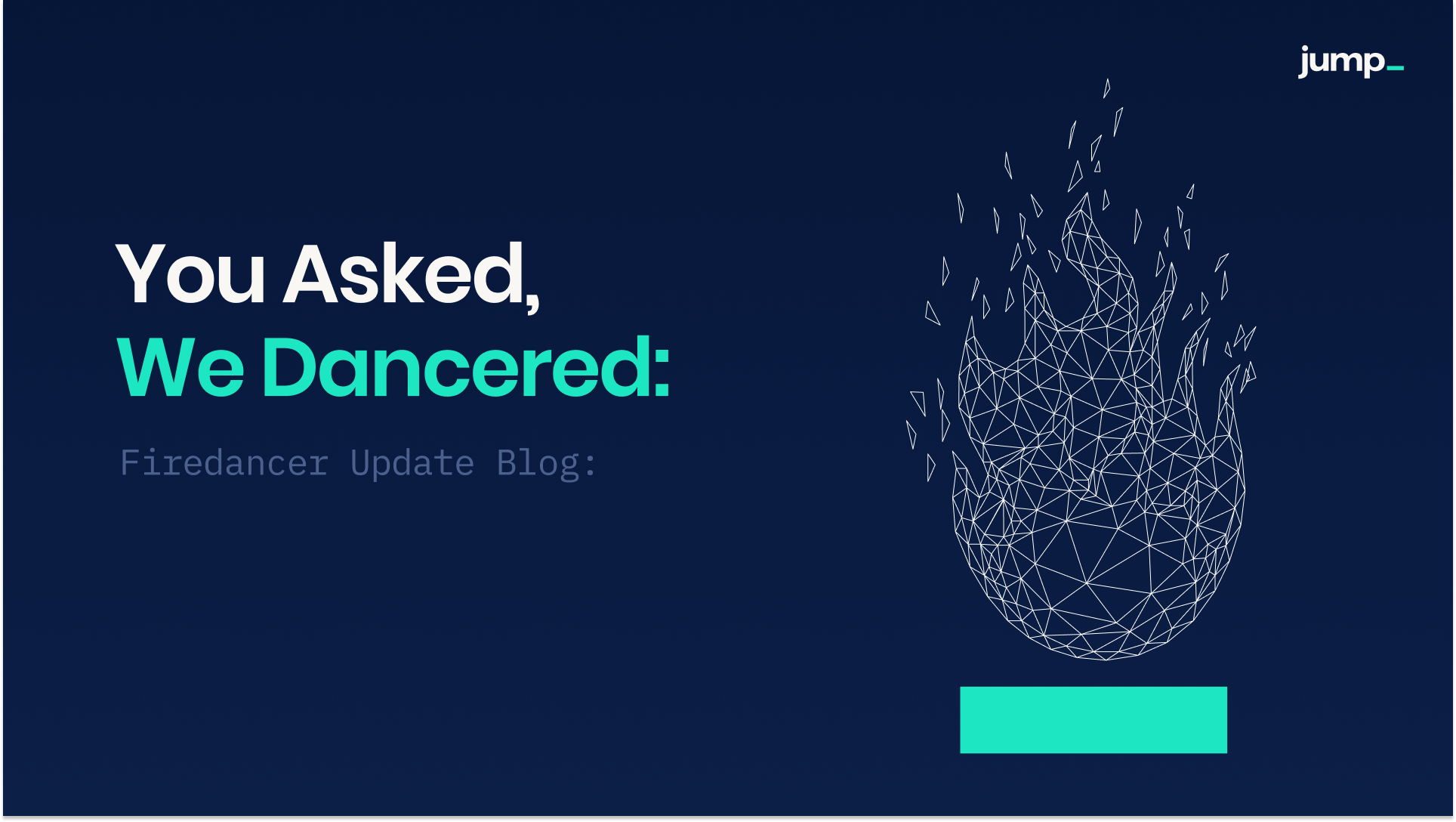
Leading this effort is the Firedancer team, headed by Kevin Bowers, a renowned expert in high-performance computing. The team is undertaking an ambitious project to rewrite the entire Solana client from scratch. This overhaul is being approached with the benefit of hindsight, a clean slate, and a wealth of domain knowledge. The expected outcomes are promising: lower hardware requirements, enhanced performance, and improved reliability and security.

However, it's essential to temper expectations regarding immediate results. The updated Solana client is unlikely to achieve the lofty goal of 1 million transactions per second (TPS) at launch. Nonetheless, this development is a significant stride in pushing the limits of what's possible with integrated L1 scaling.
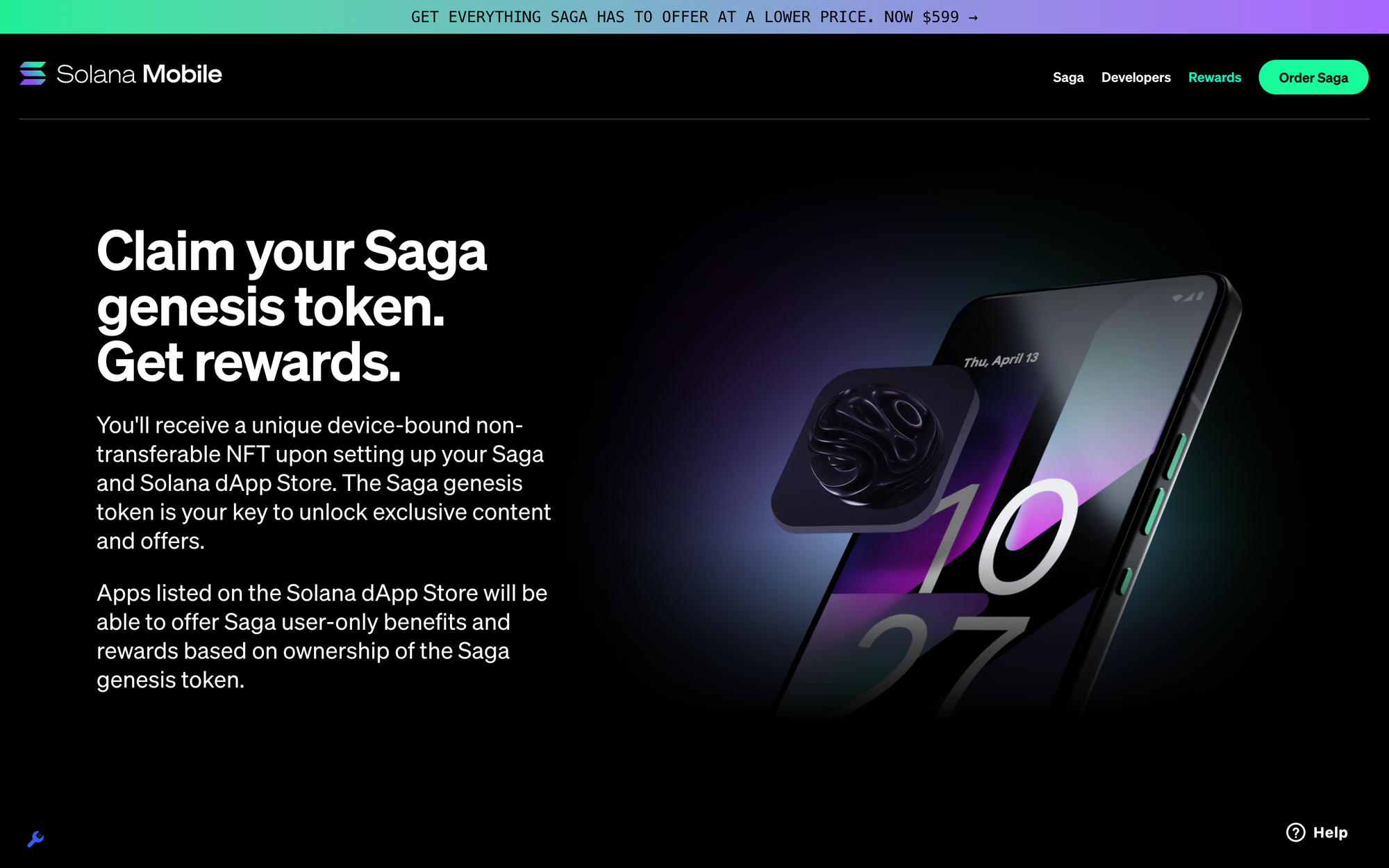
Solana's Saga smartphone, initially struggling with sales, has seen a dramatic increase in demand. This surge is largely attributed to the airdrop of 30 million BONK tokens, a memecoin on the Solana network, to each new phone owner. The value of this airdrop has been substantial, at times exceeding the cost of the phone itself, which led to a significant boost in phone sales.
"Imagine they drop an NFT. 20k supply at around an 8 SOL mint price. The utility is a mobile phone and upcoming airdrops with ecosystem partners." #SAGA
The BONK token experienced a remarkable surge in value, over 1,100% in the last 30 days, propelling its market capitalization above that of its competitor memecoin, Pepe. Solana Labs is now keen to see more developer submissions for the dApp store, as they believe Web3 developers are creating great apps that can attract a loyal and committed community. This aligns with the broader goal of breaking the dominance of centralized app service providers like Apple's iOS Store and Google's Play Store. Yakovenko expressed that once developers start releasing crypto-incentivized apps for Saga users, it would create a concentrated distribution channel for users interested in crypto incentives, potentially disrupting the current mobile app market dynamics.
This optimistic outlook is also reflected in the price action of Solana (SOL), which has seen a significant uptrend, increasing by 300% in the last two months and overcoming key resistance levels. (VanEck 2030)
The Solana blockchain is bustling with innovative applications that mirror and, in some cases, advance the functionalities of well-known Ethereum-based apps. Here's a glimpse into some of these:
USDH (Hubble) vs. MakerDAO: Hubble on Solana is akin to Ethereum's MakerDAO, providing a stablecoin ecosystem. Hubble allows users to mint USDH, a stablecoin, using various crypto assets as collateral.
Pyth vs. Chainlink: Pyth, operating on Solana, is comparable to Chainlink on Ethereum. It serves as an oracle solution, providing real-time and verifiable market data to DeFi applications.
Squads Protocol vs. Gnosis Safe: Squads Protocol on Solana mirrors the functionality of Ethereum's Gnosis Safe, offering a platform for creating and managing multi-signature wallets.
Realms (SPL Governance) vs. Snapshot: Realms is Solana's answer to Ethereum's Snapshot, providing a decentralized platform for governance and voting within the Solana ecosystem.
Metaplex vs. Zora: Similar to Zora on Ethereum, Metaplex on Solana is a platform that allows creators and artists to launch and manage NFT storefronts and marketplaces.
Magic Eden vs. OpenSea: Magic Eden stands as Solana's parallel to Ethereum's OpenSea. It's a leading marketplace for buying, selling, and trading NFTs on Solana.
Tensorswap vs. Blur: Tensorswap on Solana is a platform similar to Ethereum's Blur, offering a decentralized trading experience with advanced features for NFT traders.
Jupiter vs. 0x/1inch: Jupiter, a popular DEX aggregator on Solana, provides functionality similar to 0x and 1inch on Ethereum, offering users optimal trade routing and better rates.
Orca vs. Uniswap: Orca functions on Solana like Uniswap does on Ethereum. It's a user-friendly DEX that facilitates the trading of various tokens on the Solana blockchain.
Solend/Marginfi/Drift/Kamino vs. Aave: These platforms are Solana's versions of Ethereum's Aave, offering decentralized lending and borrowing services.
Kamino vs. Yearn: Kamino, similar to Yearn on Ethereum, is a yield optimization platform on Solana that allows users to maximize the returns on their crypto assets.
Marinade/Jito vs. Lido: Marinade and Jito on Solana offer staking services comparable to Lido on Ethereum, enabling users to earn rewards by staking their tokens.
Drift, Jupiter, Żęta Markets vs. Open/GMX Perps: These platforms provide perpetual trading options on Solana, similar to what Open and GMX offer on Ethereum.
Mayan Finance vs. Bridges: Mayan Finance on Solana is a bridge service, facilitating the transfer of assets between different blockchains, much like bridge services on Ethereum.
SNS Names vs. ENS: SNS Names is Solana's version of Ethereum Name Service (ENS), offering human-readable names for wallet addresses and decentralized websites.
Phantom, xNFT Backpack, Solflare vs. MetaMask: These are popular wallet applications on Solana that offer similar functionalities to Ethereum's MetaMask.
PHANTOM APP: CAMERA MINT “INSTANTLY TURN PHOTOS AND VIDEOS INTO NFTS” #SAGA
Moving Beyond the Ethereum Shadow
It's essential to acknowledge the lingering reluctance in the crypto community to fully embrace Solana, often out of loyalty to Ethereum. However, a closer look at the user experience (UX) and functionalities of Solana's offerings suggests a shift. Products like Tensor, Jupiter, Kamino, and Phantom are not only leading within Solana's ecosystem but are also competing fiercely with the best from Ethereum. This comparison highlights the advancements Solana has made in terms of UX.
Liquidity and the Lindy Effect: Ethereum's Edge
While Solana is making strides, Ethereum still maintains a lead in terms of liquidity and the Lindy effect—a concept implying that the longer something has been around, the more likely it will continue to exist. This enduring reliability makes Ethereum a preferred choice for storing significant capital.
Behavioral Shift: From Desktop to Mobile
A critical shift observed in the crypto world is the move from desktop-first platforms like MetaMask and Ledger to mobile-first platforms. This transition, most notably seen in the shift from Ethereum's DeFi summer in 2020 to Solana's winter in 2023, underscores the growing importance of mobile accessibility in the crypto space.
Solana's Recent Achievements
- DEX Volume and TVL: Solana recently surpassed Ethereum in DEX volume, a significant milestone. Despite having only 5% of Total Value Locked (TVL), this achievement challenges the perceived importance of TVL as a metric.
- NFT and DEX Market Performance: In terms of NFT volume, Solana is outperforming Ethereum, with platforms like Tensor surpassing their Ethereum counterparts. Similarly, Solana's Jupiter has flipped Uniswap in terms of volume, signaling a shift in market preference.
The Investment Cycles: BTC, ETH, and Now SOL
Reflecting on the investment cycles within the crypto market, there's a notable progression from prioritizing Bitcoin, to Ethereum, and now Solana. Comparing the market capitalizations of Ethereum and Solana, with ETH at $10k equating to a $1.2+ trillion market cap, and SOL at $500 representing a $210 billion market cap, there's significant growth potential for Solana. (VanEck)
New Narrative
A new narrative is unfolding, one that beckons Ethereum maximalists to explore the burgeoning realm of Solana. And it isn't just a tech-centric one. It's also about user experience. Solana shines bright, offering what many consider the best UX. With a mobile-first approach, Solana taps into the 20K pool of saga smartphone users.
Each community tells its own unique story. Bitcoin is like witnessing an old religion, steeped in tradition and unwavering faith. For them, Bitcoin is more than a currency; it's a symbol, a philosophy, a part of their identity.
Then, we have the Ethereum crowd, a fascinating blend of tech enthusiasts and modern-day philosophers. Sure, they've reaped substantial financial rewards from Ethereum's growth, but their journey didn't stop there. They ventured into realms beyond the blockchain, exploring concepts like network states and delving into spiritual and personal development experiences. Think of them as the Renaissance individuals of the crypto world, always seeking new frontiers, be it in technology or in their personal lives.
Solana has been the underdog. These past couple of years haven't been smooth sailing for them. The turmoil surrounding SBF and FTX hit them hard, but instead of bowing down to these setbacks, they doubled down on their efforts. It's a community that's been through the wringer, yet their response was to build, and build relentlessly. They're like the phoenix rising from the ashes.
Solana as Apple and Ethereum as Android. PlayStation vs Xbox.
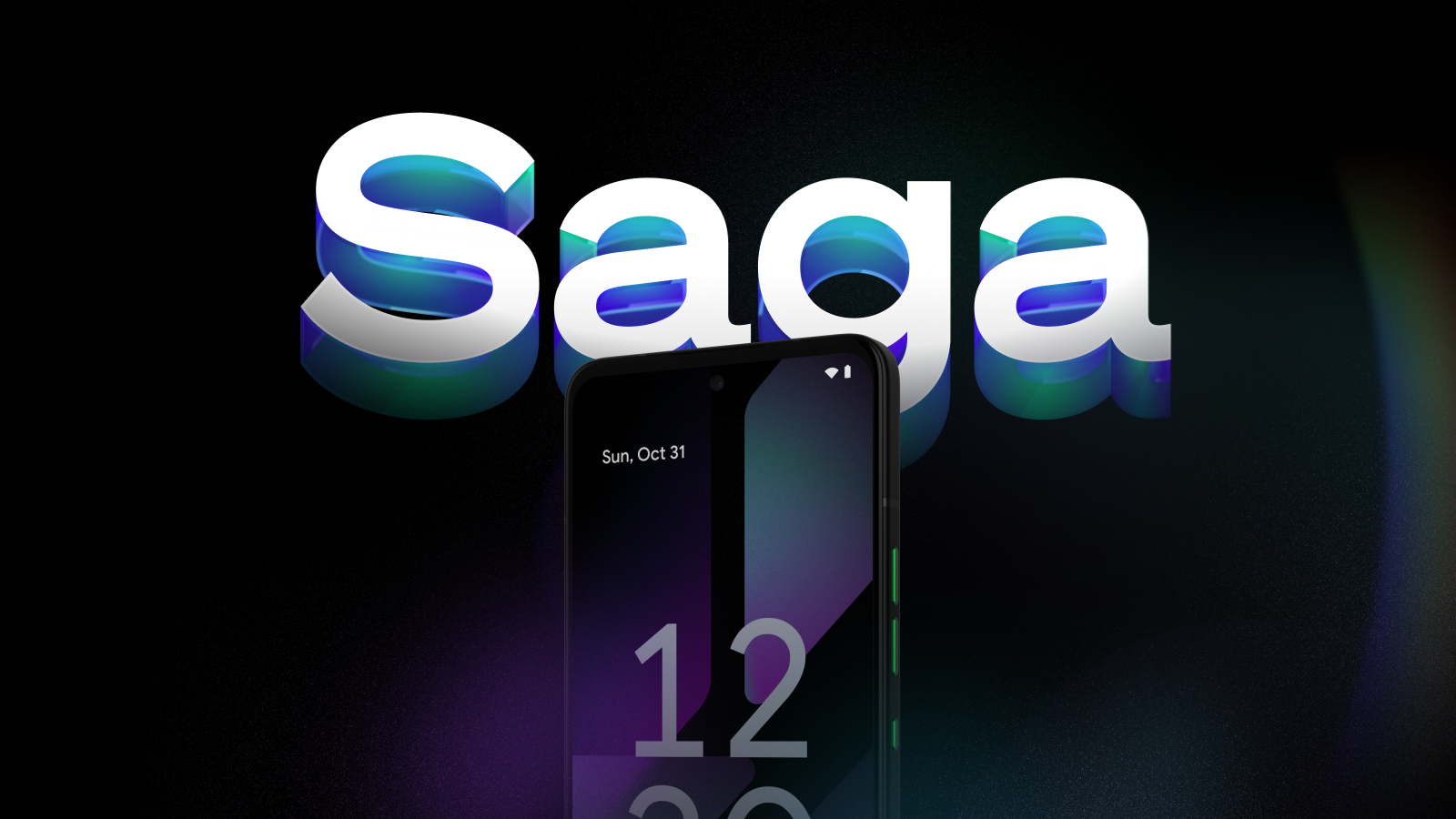
For developers looking to dive into the Solana ecosystem, there's a treasure trove of resources and tools that make it an attractive platform for building fast, cost-effective, and scalable applications. Emphasis on network health metrics such as the high number of validators (~2000) and RPC nodes (~900), high Nakamoto coefficient, good node hosting and geographical distribution, low carbon footprint.
Smart Contract Frameworks:
Anchor: A popular framework for Solana smart contract development.
Seahorse: Another framework offering unique features for Solana development.
Nautilus: A newer addition to the Solana ecosystem, worth exploring.
Programming Languages:
Rust: The primary language for Solana development.
C and Python: Useful for certain aspects of Solana development.
Solidity (and soon Move): For developers familiar with Ethereum, Solidity is also an option, with Move language support on the horizon.
Myth Busting: Contrary to popular belief, Rust is not the only language for Solana development. The ecosystem is versatile.
Bankrun: A testing framework for Solana (more details at Bankrun).
JupiterExchange, Birdeye: For integrating price data into your applications.
Jito: A platform focusing on maximizing extractable value on Solana.
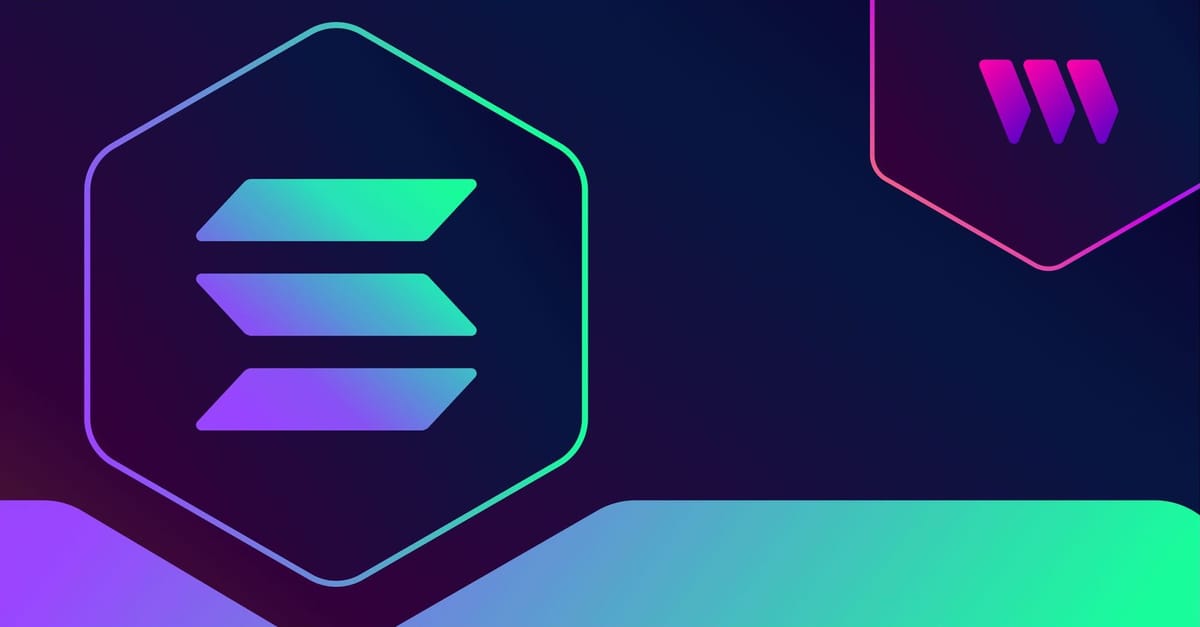
Sad to read that they faded SOL, it is what it is. Below you can see how we can still pull our own RPC

General Starting Place:
Solana's official developers portal is a comprehensive starting point:
RPCs, APIs, Education, Indexing, Webhooks, Data Streaming:
Helius Labs: Offers a range of services including RPCs, APIs, educational resources, indexing services, webhooks, and data streaming.
RPC Gateway: Ironforge: A gateway for RPC on Solana.
NFT Development: Metaplex: The go-to framework for NFT projects
Storage Solutions: GenesysGo, Irys
Payments APIs: Sphere Labs, Getcode, SolanaPay
Solana Ventures: Apply // Armada Launch // Forgd

The Art Scene
There's a growing discussion about the ideal platform for minting and trading high-value art. Ethereum, long regarded as the premier blockchain for digital art, has been likened to prestigious institutions like Christie's in the traditional art world. This comparison stems from Ethereum's strong history in the NFT space, attracting renowned artists and collectors, and creating an elite, established community.
However, this view raises some intriguing questions, particularly from those who originally sought to disrupt the traditional art model, where access and success often depend on financial means and connections. The Ethereum art scene, while thriving, seems to be edging closer to the very traditional models it aimed to challenge, creating a space where top artists thrive but emerging talents without substantial means are edged out due to high costs.
In contrast, blockchains like Solana and Tezos are emerging as more accessible platforms, akin to local galleries in the art world. These platforms offer lower costs, providing a space for emerging artists to showcase their work without the financial barriers posed by Ethereum's current fee structure.
This situation leads to a pivotal reflection on the purpose of Web3 and blockchain in the art world. The goal of these technologies was to dismantle antiquated models, making art more accessible and democratic. However, if the community falls into the same patterns of exclusivity and elitism, it raises questions about the true progress made.
There's a growing belief that chains like Solana can indeed support high-value art. The notion that Ethereum's higher costs equate to superior quality is being challenged, as it inadvertently creates exclusivity and barriers for emerging artists. In this light, prioritizing platforms like Solana aligns more closely with the ethos of democratizing the art world. It's about valuing art irrespective of its blockchain origin, focusing on talent and creativity rather than the platform's prestige or cost.
While unique buy wallets on ETH NFTs have stayed flat for the past 6 months, SOL buy wallets up 4x in the past month.
Closing Thoughts
Let's move beyond the outdated 'Ethereum killer' narrative from the last cycle – it's simply not relevant anymore. In the world of Pareto efficient technologies, it's natural for platforms to have overlapping features and compete with each other, and that's perfectly healthy. It's important to understand that Solana's success doesn't necessitate Ethereum's downfall.
